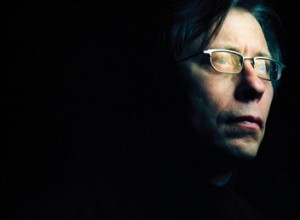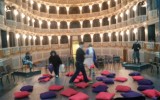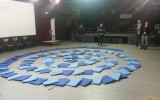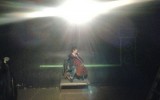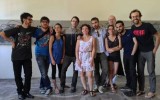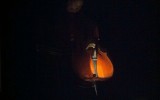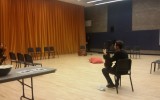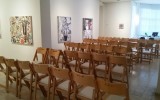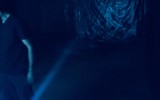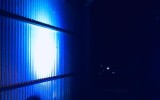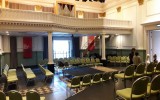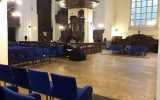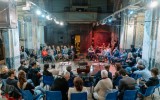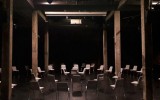IN THE DARK
String Quartet n. 9 //
PREVIOUS CONCERTS
- Kaivos festival // 11th September 2020 Outokumpu (Finland)
- Nuova Musica // 21th October 2020 h 21:00, Teatro Lauro Rossi, Macerata (Italy)
- music@villaromana // 13th September 2019 20:00, Villa Romana, Firenze (Italy)
- Musica in Prossimità // 20th September 2019 h 19:30, Teatro Del Lavoro, Pinerolo (Italy)
- Sound of Music // 7th November 2019 h 20:00, Groningen, (Holland)
- November Music // 8th November 2019 h 15:00, 's-Hertogenbosch, (Holland)
----------------------------
String Quartet n. 3 // listen
FUTURE CONCERTS
- Teatri del suono / ON THE EDGE // 17th February 2023 h 18,30, Magazzino 26 / Sala Luttazzi, Porto Vecchio , Trieste
PREVIOUS CONCERTS
SOUND SPACES 2023 // 19th December 2023, Malmö ( Sweden
La Via Lattea 15 // 30th September 2018 h 17:30, Mendrisio, Teatro dell'Architettura (Switzerland)
- Il Borgo Risuona // 16th June 2018 h 21:30, Chiesa di San Vito, Piossasco (Italy)
- Tzlil Meudcan Festival // 12th July 2016 h 20:00, Tel Aviv (Israel)
- Johns Hopkins University of Baltimora // 27th March 2015 h 21:45, SDS Room - Mattin Center, Homewood Campus, Baltimora (USA)
- Dialoghi sul comporre // 3rd Jenuary 2015 h 21:30, Budrio, Bologna (Italy)
- Rassegna "In prossimità" // 5th Dicember 2014 h 21:00, Pinerolo, Teatro del Lavoro (Italy)
- Rassegna di Nuova Musica // 6th April 2014 h 21:00, Macerata (Italy)
- Bloom // 3rd April 2014 h 21:00, Mezzago (Italy)
- Villa Romana // June 2013 h 21:00, Firenze (Italy)
Quartetto n. 3 “In iij. Noct
Il quartetto In iij. Noct vede nell’assenza di luce la sua più importante chiave di lettura. Il quartetto infatti viene eseguito totalmente al buio con i quattro musicisti ai quattro angoli dello spazio e il pubblico in centro.
Haas esplora dunque un diverso tipo di percezione sonora sia con l’assenza di luce sia con una fonte sonora quadrifonica che mette l’uditore al centro di una percezione quasi primordiale e totalizzante.
Il quartetto valorizza lo spazio in cui viene eseguito, non più dunque solo teatro o sala da concerto,
i quattro interpreti si trovano a reinventare sempre in maniera diversa uno spazio sonoro superando il più consetuo palco a fruizione frontale. L’assenza di luce ci mette di fronte inevitabilmente ad una coscienza forzata e quasi illuminante dei nostri sensi scoprendo capacità sensoriali assopite.
La partitura è composta da una ventina di pagine scritte in maniera discorsiva in cui si organizzano suoni ed strutture sonore ma nelle quali si concede piena libertà all’esecutore rispetto al come e dove far accadere gli eventi musicali. La composizione in ogni esecuzione e luogo sarà dunque diversa ma manterrà viva la firma del compositore, il quale anche nell’improvvisazione riesce a far mantenere al brano un’ estrema coerenza.
// from the "Darkness Audible" by Alex Ross //
The New Yorker, Nov. 29, 2010.
… The work is subtitled In iij. Noct., a reference to the Third Nocturn of the old Roman Catholic Tenebrae service for Holy Week, which marked Christ’s sufferings and death with the gradual extinguishing of candles. Haas, who grew up in Tschagguns, a Catholic village in the Austrian Alps, asks for total darkness during performances of his quartet, the score specifying that even emergency lights should be covered.
When the blackout began, I initially felt a fear such as I’ve never experienced in a concert hall: it was like being sealed in a tomb. No wonder the members of the quartet usually try out a brief spell of darkness with each audience, to see if anyone exhibits signs of distress. (Indeed, one young man sheepishly got up and left.) Yet the fear subsides when the music begins. The performers, who are positioned in the corners of the room, seem to map the space with tones, like bats using echolocation to navigate a lightless cave. They have memorized the score in advance, and it is an unusual document: Haas sets out eighteen musical “situations”—with detailed instructions for improvising on pre-set motifs, chords, and string textures—and a corresponding series of “invitations,” whereby the players signal one another that they are ready to proceed from one passage to the next.
Often, the music borders on noise: the strings emit creaks and groans, clickety swarms of pizzicato, shrill high notes, moaning glissandos. At other times, it attains an otherworldly beauty, as the players spin out glowing overtone harmonies. Toward the end comes a string-quartet arrangement of one of Carlo Gesualdo’s Responsories for the Tenebrae service (“I was like an innocent lamb led to the slaughter . . .”). That music is four hundred years old, and yet, with its disjointed tonal language, it sounded no less strange than the contemporary score that surrounded it. Weirdness is in the ear of the beholder.
In the past decade, Haas, who is now fifty-seven and living in Basel, Switzerland, has emerged as one of the major European composers of his generation. He is allied with the French spectralist school, which draws musical material from a close analysis of overtones and other properties of sound. Haas also esteems various American experimental composers, particularly those who are concerned with microtonality, the division of the octave into more than the usual twelve pitches. In this way, he bridges a gap between American and European musical communities that historically have had little to say to each other. What sets him apart from many of his European contemporaries is that he is not afraid of theatrical gestures, opulent expanses of sound, landscapes on an almost Wagnerian scale. Not for him the studiously fragmented modernist discourse that Ligeti once defined as “event—pause—event.” He is an esoteric Romantic, dwelling on the majesty and terror of the sublime.
press:
